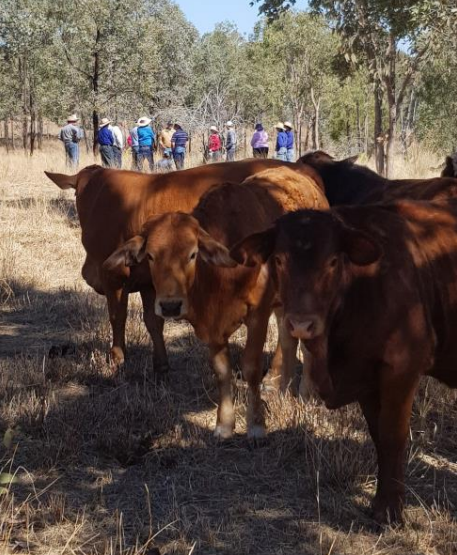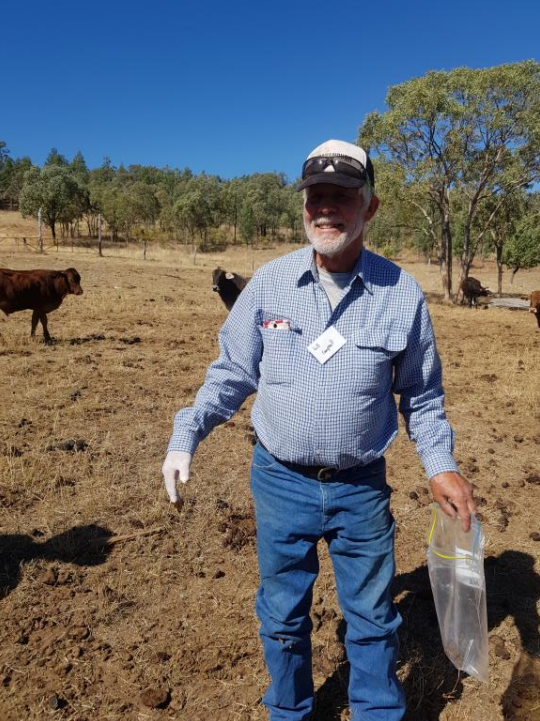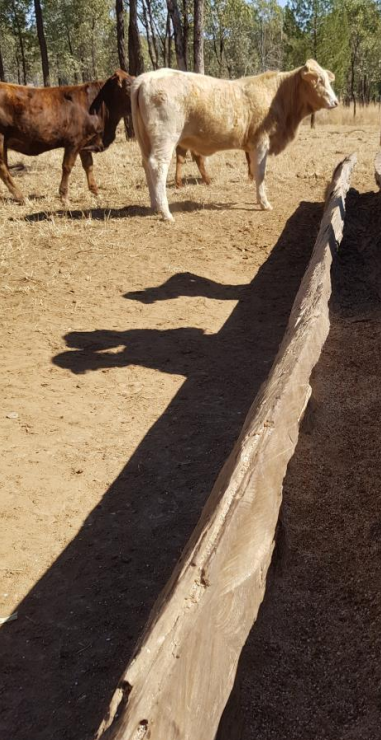Weaner nutrition for the win

A GrazingFutures Case Study — compiled by Cox Inall Communications and ConnectAg
Background
Gill and Eunice Campbell run a crossbred cattle and grazing operation across their 13,000-hectare property, ‘Claravale’. Situated approximately 50 kilometres northeast of Mitchell, Claravale has been in the Campbell family since 1890.
Environmental sustainability is a priority for Gill and Eunice. They are committed to developing management practices that will improve and maintain the condition of their land and livestock. As a matter of fact, for several years the Campbell’s felt that graziers, themselves included, weren’t doing as well as they could at keeping ground cover and pasture quality up to scratch.
With this in mind, combined with a desire to improve land condition, pasture composition and cattle performance led the Campbells to seek out industry research recommendations and participate in learning opportunities. Workshops such as Nutrition EDGE and Efficient Nutrition, enabled the Campbells to consider alternative management practices.
A drive for constant improvement

Gill and Eunice’s beef enterprise focuses on breeding and selling crossbred weaners. Through attending MLA’s EDGE workshops and other opportunities, the Campbell’s decided to focus on improving their weaner feeding management.
Historically, their weaning process involved mustering, drafting and sometimes trucking the weaners back to a central yard. Although considered necessary, this process could result in up to three days off feed.
While attending a Nutrition EDGE course, Gill and Eunice learned the potential three-day feed gap was likely to be eliminating most of the healthy gut bacteria. Thus, the weaners early rumen biology could be taking up to four weeks to recover, impacting on their growth.
Today, the Campbells avoid this feed-gap by ensuring weaners constantly have access to ample good quality hay and clean water. Alternating between grass and hay during the week of weaning, allows calves to settle quicker and stay full for longer, minimising weight loss. The Campbells have noticed significant improvements in the condition and growth of calves post-weaning as a result. Consequently, the improved weight gain carries forward to higher conception, and earlier pregnancy rates in the retained heifers.

Continuous learning improves confidence
The Campbells listed their goals as:
- counteracting the impact of dry seasons
- retaining a core breeding herd
- growing more quality grasses.
It was upon reflection at the workshop that it became clear of the importance of good land management.
The Campbell’s decision to rotationally graze ten years ago proved to be a good strategy for withstanding drought conditions.
Running cattle in larger mobs allowed the Campbells to systematically spell paddocks, improve groundcover and balance cattle and feed supplies. Consequently, the process keeps the country ‘rain ready’, i n effect, improving pasture quality and land condition.
n effect, improving pasture quality and land condition.
The Campbells have observed a shift in pasture species composition in some areas. Unpalatable species, such as wire grass, have declined and made way for more preferred species, such as bluegrasses and Mitchell grasses.
Rotational grazing also meant they were providing adequate roughage across the property, while year-round use of urea based loose licks retained and improved cattle performance.
Implementing learnings
The Campbells’ now collect dung samples for NIRS dietary analysis analysis to determine pasture quality. The results therefore inform supplementation strategies across the year, reviewing conditions of each paddock, and of each mob. The Campbell’s observed that cattle condition was good, even in the peak of the dry spell, with calves retaining fat cover and cows staying in good, strong, store condition.
Some of the Campbell’s rules of thumb:
- Actively look for opportunities to improve animal and grazing land management skills and knowledge and always keep learning.
- Equip yourself to progress and improve on-farm practices.
- Use the best knowledge available to make the most out of your land and resources now, and into the future.
- Conservatively stock and actively rotate mobs 2-3 times a year to spell country.
- Continuously monitor the condition of country, in particular keep pastures in good condition and check stocking rates.
- Don’t let your stock run out of supplement or fodder when in the yards. Always have hay in the shed and on offer to keep rumen bugs functioning.
This article is an abridged version of the wonderful case study created by: Meg Pearce (Cox Inall Communications), Gill and Eunice Campbell (‘Claravale’) and Rhonda Toms-Morgan (ConnectAg), July, 2021. To read the original case study, click here.
Permissions: External